Somebody has thought of the children
In my previous post, won't somebody think of the children , I introduced a couple of concepts
- animations of journeys to school
- various questions we can start to answer with our Twin Cities data, for example
- What routes are used for cycling to school?
- What routes would be used if children cycled to school?
- How much time is each child in close proximity to a car while cycling?
- How much less traffic would there be on the roads?
- Where should protected bike lanes be installed?
While the animations are attention grabbing, it’s the questions we can answer that are the most interesting.
Cars vs Bikes
In a moment, when you’ve finished reading this post, you can head over to a dashboard I’ve built where you can play around with changing the road network to see what impact it has on road use around schools.
I say “in a moment”, because here I’m going to talk a bit about what it does.
When you first load the dashboard you’ll see the road network around two schools in Williamstown (Australia), like this
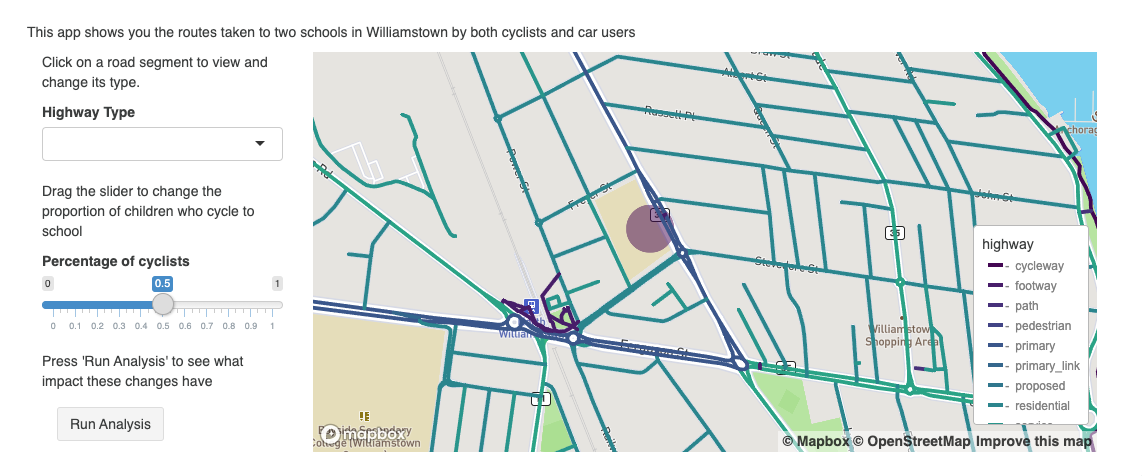 If you leave the road network unchanged, and set the ‘percentage of cyclists’ to say, 50% (as in the image), you can press ‘Run Analysis’ to see how the roads are used.
If you leave the road network unchanged, and set the ‘percentage of cyclists’ to say, 50% (as in the image), you can press ‘Run Analysis’ to see how the roads are used.
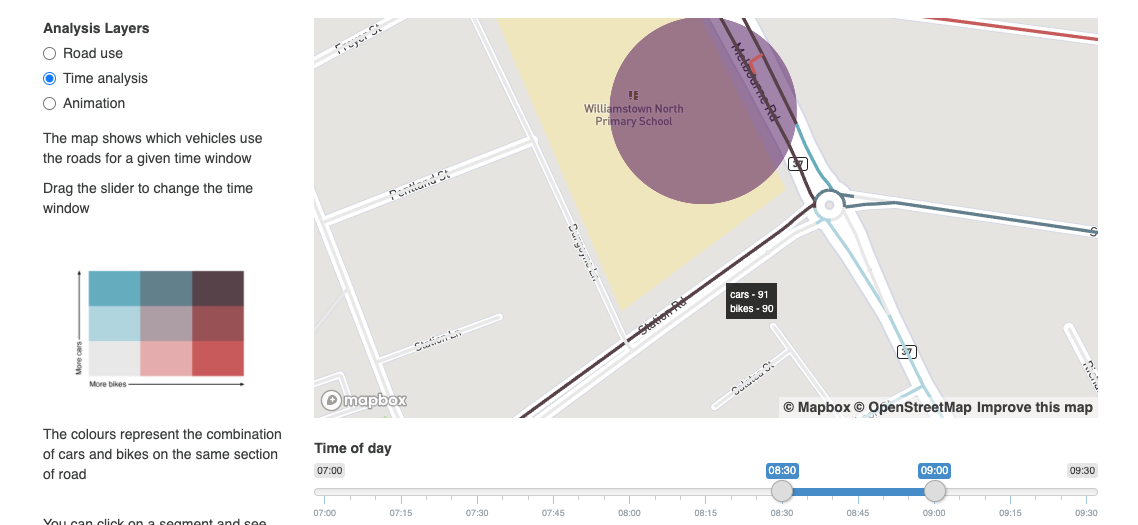
The ‘Time Analysis’ map shows you how many bikes and cars use each section of road, between your chosen time window. Here I’ve highlighted Station Road to show there are 95 cars and 87 bikes predicted to use it between 08:30 and 09:00.
This is right outside a school so you’d expect a mix of children cycling and being dropped off in cars.
BIG CAVEAT - This is just a hypothetical 50/50 split between cars and cyclists. Of course we know a lot of children will walk to school.
The Door Zone
A slight deviation, but you’ll see why this is relevant.
A lot of cyclists I speak to aren’t necessarily concerned about traffic on the road, but are definitely concerned about being ‘doored’ - that is, someone in a parked car opens their door right at the moment you’re cycling past.
Here’s a nice little explanation of the door zone for further reading.
In our example, mixing 95 cars pulling up to drop-off their child, and 87 kids cycling to school, gives a lot of opportunity for someone to be inadvertently doored.
Exploring options
You can use the dashboard to explore various options for changing how the roads are used.
For example, if you go back to the ‘Road network’ map, you can click on road segments and change their ‘type’. In this example I’ve selected Station Road, and changed it from ‘Residential’ to ‘Cycleway’. This basically means cars are no longer allowed on this section
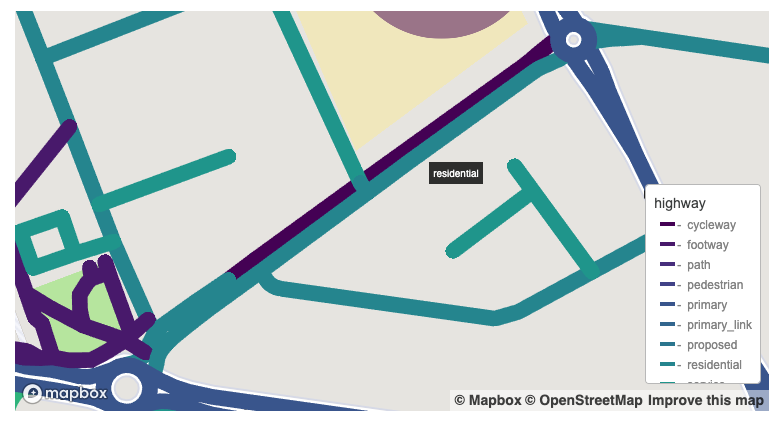
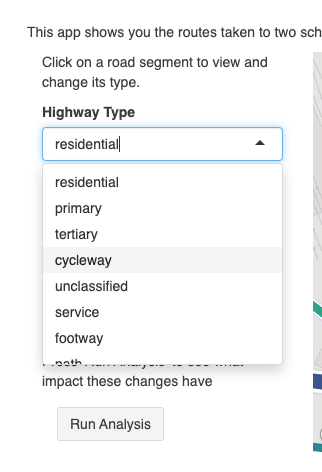

If you press ‘Run Analysis’ again, you can go back to the Time analysis map and see that cars no longer use this road.
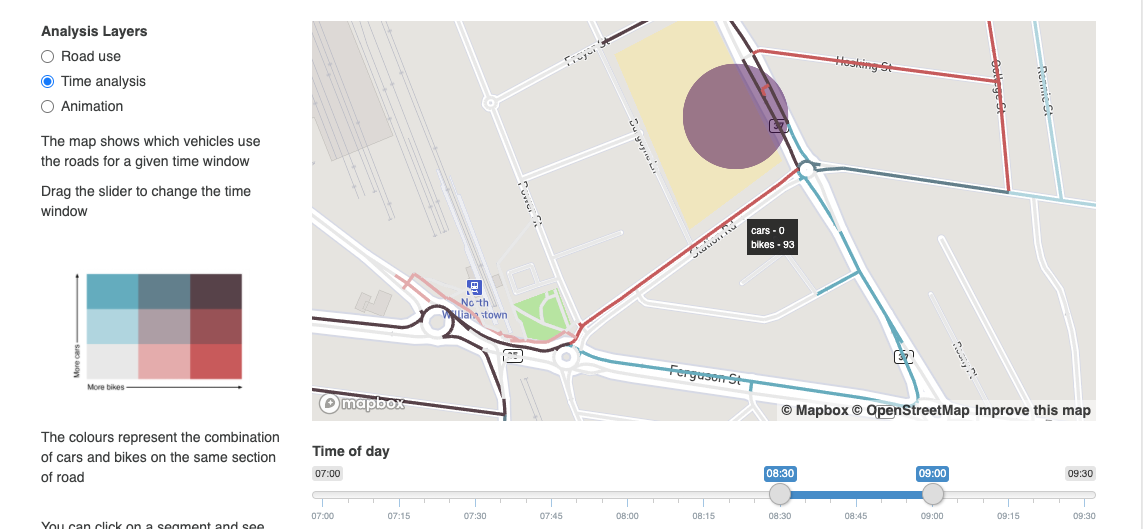
So what’s next?
Hopefully this post (and dashboard) has got your mind racing with possible ideas and analysis questions, and how you too could use our Twin Cities data to analyse your local area. You can chat with us if you want to discuss any ideas, or talk about what we’re doing next with this.
